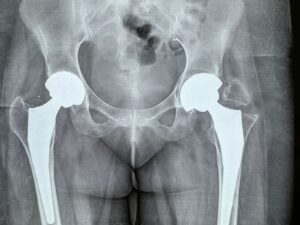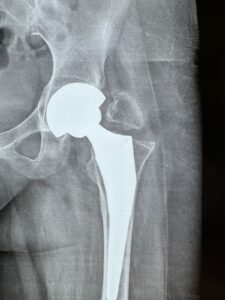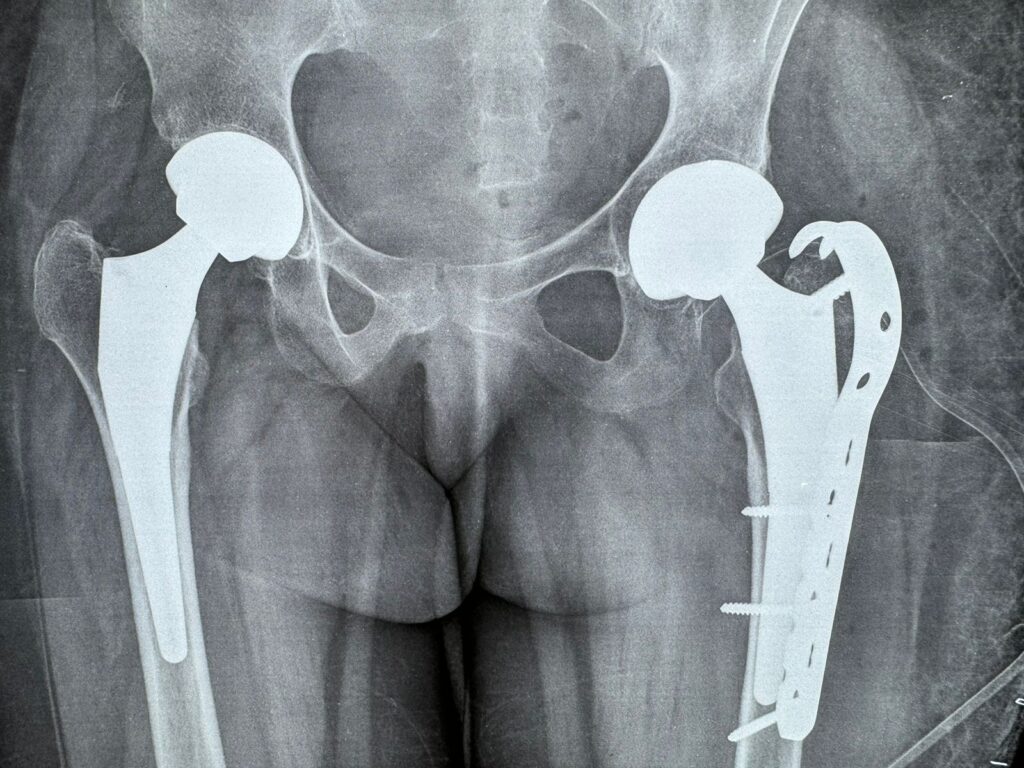Abstract:
This case study presents the management of a patient who underwent bilateral total hip replacement (THR) seven years prior and subsequently experienced a fall resulting in a fracture of the left hip. Despite the fracture, the existing implants were preserved, and the fracture was treated with a hook plate. The patient was advised not to bear weight on the operated limb for four weeks post-surgery, followed by a gradual return to walking. The case highlights the challenges and considerations in managing fractures in patients with existing hip replacements.
Introduction:
Total hip replacement surgery (THR) is a common surgical procedure for patients suffering from severe hip arthritis or fractures. However, patients with THR are at risk of sustaining fractures around the hip joint due to various factors, including trauma. Management of fractures in patients with existing hip implants presents unique challenges, requiring careful consideration of implant integrity and fracture stability.
Case Presentation:
A 65-year-old male presented to the orthopedic clinic with complaints of severe pain in the left hip following a fall from a two-wheeler. The patient had a history of bilateral total hip replacement (THR) seven years ago due to osteoarthritis. Physical examination revealed tenderness and limited range of motion in the left hip, and X-ray imaging confirmed a fracture involving the greater trochanter of the left femur. However, there was no evidence of implant loosening.
Management:

Given the patient’s history of bilateral THR and the absence of implant loosening, a conservative approach was chosen to preserve the existing implants. The fracture was deemed stable and amenable to fixation with a hook plate. The patient was advised strict non-weight-bearing on the left limb for four weeks to allow for optimal healing of the fracture.
Follow-Up:
At the four-week follow-up visit, X-ray imaging showed reduced fracture alignment with no signs of displacement. The patient reported improvement in pain and was gradually allowed to bear partial weight on the left limb with the assistance of crutches. Physical therapy was initiated to improve hip mobility and strength. By eight weeks post-injury, the patient demonstrated significant improvement in walking ability and was encouraged to gradually increase weight-bearing as tolerated.
Outcome:


At the three-month follow-up, the patient had regained near-normal function of the left hip with minimal residual pain. X-ray imaging confirmed adequate fracture healing and maintained implant integrity. The patient was able to resume activities of daily living without significant limitations and was advised to continue with hip-strengthening exercises for long-term joint health.
Conclusion:
Managing fractures in patients with existing total hip replacements requires careful evaluation of implant integrity and fracture stability. In cases where the implants are preserved and the fracture is amenable to fixation, a conservative approach can lead to favorable outcomes with proper rehabilitation. Close monitoring and adherence to weight-bearing restrictions are essential for successful management and recovery in such cases.
